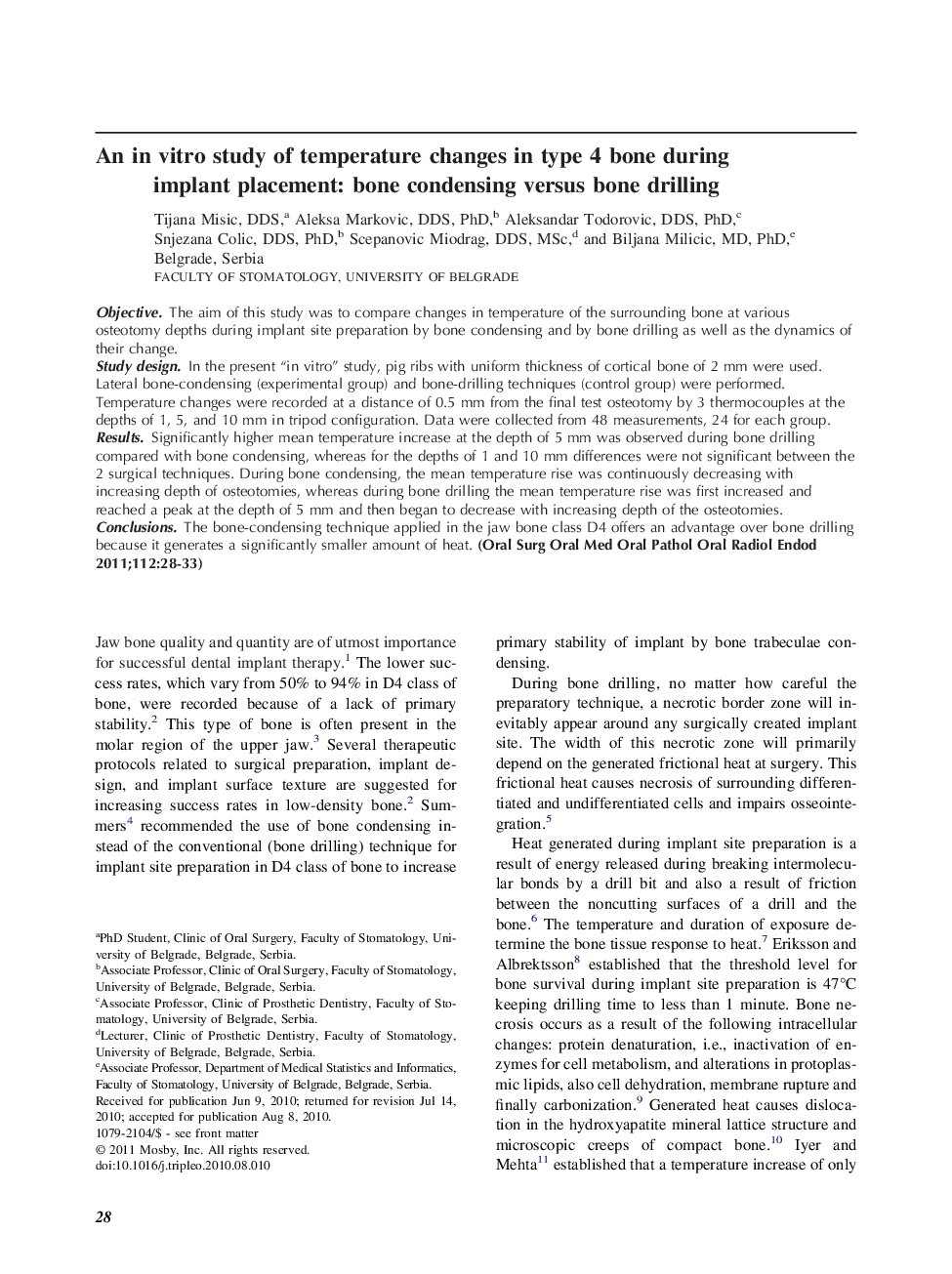| Article ID | Journal | Published Year | Pages | File Type |
|---|---|---|---|---|
| 3166977 | Oral Surgery, Oral Medicine, Oral Pathology, Oral Radiology, and Endodontology | 2011 | 6 Pages |
ObjectiveThe aim of this study was to compare changes in temperature of the surrounding bone at various osteotomy depths during implant site preparation by bone condensing and by bone drilling as well as the dynamics of their change.Study designIn the present “in vitro” study, pig ribs with uniform thickness of cortical bone of 2 mm were used. Lateral bone-condensing (experimental group) and bone-drilling techniques (control group) were performed. Temperature changes were recorded at a distance of 0.5 mm from the final test osteotomy by 3 thermocouples at the depths of 1, 5, and 10 mm in tripod configuration. Data were collected from 48 measurements, 24 for each group.ResultsSignificantly higher mean temperature increase at the depth of 5 mm was observed during bone drilling compared with bone condensing, whereas for the depths of 1 and 10 mm differences were not significant between the 2 surgical techniques. During bone condensing, the mean temperature rise was continuously decreasing with increasing depth of osteotomies, whereas during bone drilling the mean temperature rise was first increased and reached a peak at the depth of 5 mm and then began to decrease with increasing depth of the osteotomies.ConclusionsThe bone-condensing technique applied in the jaw bone class D4 offers an advantage over bone drilling because it generates a significantly smaller amount of heat.
